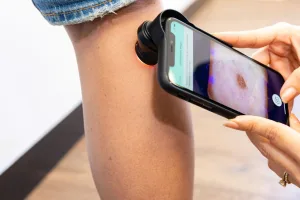Capsule Sponge: A Gentler Approach to Monitoring Barrett’s Esophagus
For individuals with Barrett’s esophagus, regular monitoring is crucial to detect any signs of cancerous changes. Traditionally, this has involved frequent endoscopic procedures, which can be invasive and uncomfortable. Now, a promising alternative is emerging: the capsule sponge test.
What is the Capsule Sponge Test?
The capsule sponge test offers a safer and less invasive method for monitoring cancer risk in patients with Barrett’s esophagus. It’s designed to reduce the necessity for repeated endoscopic examinations.
How Does It Work?
The test involves swallowing a small capsule attached to a string. Inside the capsule is a compressed sponge. Once the capsule dissolves in the stomach, the sponge expands and is then gently pulled back up the esophagus via the string. As it travels, the sponge collects cells from the esophageal lining.
Key Steps:
- Patient swallows a capsule.
- Capsule dissolves in the stomach.
- Sponge expands.
- Sponge is retrieved, collecting cells.
Benefits of the Capsule Sponge Test
- Less Invasive: Avoids the discomfort and risks associated with traditional endoscopy.
- Safer: Reduces the potential for complications.
- More Convenient: Can be performed in a primary care setting, enhancing accessibility.
Implications for Barrett’s Esophagus Patients
The capsule sponge test represents a significant step forward in the monitoring of Barrett’s esophagus. By offering a less invasive and more convenient option, it can encourage more patients to undergo regular screening, leading to earlier detection and potentially better outcomes.
Final Overview
The capsule sponge test provides a user-friendly alternative for monitoring individuals at risk of esophageal cancer. Its non-invasive nature and convenience make it a valuable tool for proactive healthcare management.




+ There are no comments
Add yours